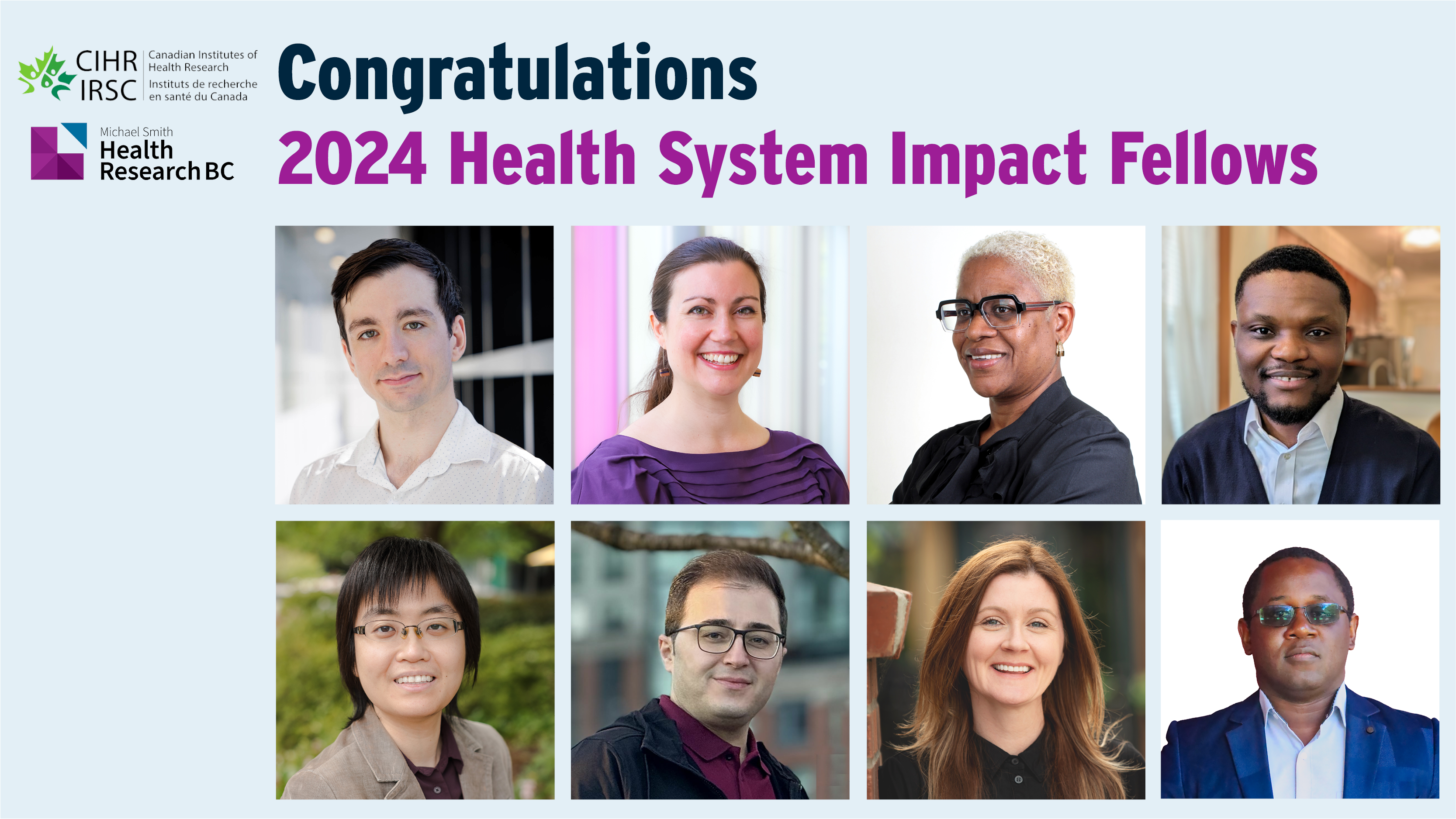KT Encounters: Embedded scholarship – Views from the inside out
26 June 2018

For many researchers, there can be a disconnect between the work they are doing in an academic setting and their underlying desire to effect change in health care or the health care system.
In this blog post, Dr. Sana Shahram, 2017 Health Policy Fellow and 2016 Trainee, shares how she found a way to bring her passion and expertise around health equity from academic theory to practical application. Shahram was one of 10 speakers at the second annual Health xChange focused on the theme of how research evidence can be used to improve health policy and practice.
Introduction
Beyond sheer curiosity, I think most of us pursue careers in health research because we want to change things for the better. However, as I was setting a course for an independent research career during my post-doc with the Equity Lens in Public Health (ELPH) research project at the Canadian Institute for Substance Use Research (CISUR), I found myself constantly grappling with the tension of balancing my academic pursuits in public health scholarship with my commitment and passion for impacting change in the health system to improve health equity. The ELPH project, which studied the integration of an equity lens in public health during a time of complex system change and public health renewal in BC, was my first glimpse of what this balance might look like. As an integrated knowledge translation (iKT) project, ELPH included our health system partners as part of the research team, from question development through to dissemination, effectively narrowing the gap between researchers and knowledge users. As a team, we successfully produced context-relevant findings, dissemination products and actions within the health system to promote health equity, many of which are ongoing or currently unfolding.
Despite many successes, the pathway for implementing ELPH’s findings to reorient health systems at the foundational level toward health equity was less straightforward. The Canadian health system is complex and rooted in particular ideological structures that can at times be at odds with the actions needed to address the structural and social determinants of inequitable health outcomes. Given this, and considering that even with improved KT strategies, including iKT, the gap between research evidence and practice persists, a new and different approach is necessary to begin to tackle these larger systems-level goals. In a full circle “a-ha” moment, I realized this gap persisted because research and practice almost always occur in different spaces, and ironically, this separation was the very thing preventing the consolidation of my seemingly divergent career goals.
As the old saying goes, “if the mountain will not come to Muhammad, then Muhammad must go to the mountain”. In my case, it seemed clear that it was time for this health systems researcher to go to the health systems mountain (aka. Interior Health)! One key conversation with Chief Medical Health Officer (and ELPH research partner) Dr. Trevor Corneil later, we were all set to pilot my dream job! For the past two years, I’ve been an Embedded Health Equity Scholar at Interior Health (IH), assigned to the Population Health and Research portfolios as an independent researcher to implement ELPH’s findings into policy and practice in real-time. This position, a partnership between me, IH and the ELPH project (with funding from MSFHR[1]), was developed strategically to address the disconnect between research and practice and to promote health equity through system-level actions within the health authority.
While I will report on the activities, outcomes and learnings of this unique role in the coming months, this blog post will focus on the nuts and bolts of innovation in health research roles, or rather, the unsexy details of innovation. But why would I focus on the unsexy details of anything, you ask? Because when there is no blueprint for the work you are trying to do, these are the exact things you need to consider before you can get to the sexy work of implementing complex system change (I realize I’m playing it pretty fast and loose with the term sexy). It comes down to three key steps: 1. Saying ‘show me the money’; 2. Waiting for the pot to boil; and, 3. Fostering symbiosis.
Saying ‘show me the money!’
“We got creative to find money to support Sana through partnerships within Interior Health. At the end of the day, we get a person that is highly qualified, highly motivated to support change and offers huge value for the money, so it’s worth it!” (Dr. Deanne Taylor, Corporate Director, Research, Interior Health)
You can’t do this work pro-bono, so someone is going to have to show you the money! Unfortunately, since there aren’t currently many (any?) established roles for independent researchers to do this type of embedded work in BC health systems, and you presumably don’t have Jerry McGuire as an agent, you need to be willing to ask for money to create your own job. I was well-positioned within ELPH as a post-doc and MSFHR Research Trainee at the time I approached IH; being able to split the cost between multiple partners meant that everyone was getting a great bang for their shared buck and that certainly made it an easier sell. The joint-funding model also mirrored the strategic and essential structure of my position where I was tied to academia while also being fully embedded within the health authority.
While this type of creativity worked in my case, it is important to consider where money for this type of work can come from in a more concrete way. An embedded scholar lives between a number of funded roles in health authorities (knowledge broker, KT specialist) and universities (research and faculty appointments), but it is necessarily distinct from and complementary to all of these positions. As research funders are increasingly concerned with showing impact for tax dollars spent on health research, this is one promising strategy for evidence implementation and complex health system change.
Waiting for the pot to boil
Fran Baum and her colleagues weren’t kidding when they said that health equity work was ‘not for the faint-hearted’[2]. Health systems change is as much about strategy as it is about knowledge, and I am constantly in a state of adjusting and re-adjusting my work to align with shifting priorities and windows of opportunity. While I’m being nimble with my path, I am conscious to stay steadfast on my goal of system-change to promote health equity.
A system is built to recreate itself, so be prepared for HARD work if you are trying to disrupt it fundamentally. For me, this means being vigilant to ensure the force of the system doesn’t dilute my goals into more palatable but less impactful and/or not evidence-based activities. I also focus on building and fostering strong relationships across the organization. For system change to work, you need to build your allies and lean on them for expertise, support and strategy, and system navigation. I started building my relationships with IH staff through my work on ELPH a year and a half before I was embedded into their system, and still spent the better part of the first year making connections and identifying allies and lever points in the system; this work takes months or even years.
Because of these factors, system change often looks like “nothing” if you don’t know what to look for. To help visualize my change process, I imagine the metaphor of bringing a pot to boil, and then think through the different factors that will need to bubble up before my watched pot can boil over. The trickle effect is common in complex health system change and being able to name, target and then demonstrate your small successes along the way will keep you motivated through the peaks and valleys of this type of work. By being able to point to the tangible smaller bubbles of work I’m doing now, it helps make sense of the more abstract and incremental systems-change goals I’m working towards, both for myself, and for the team I’m working with. Coincidentally, this skill will also save you a lot of grief when everyone from your mom to your colleague regularly asks you “so what is it you actually do, anyway?”
Fostering symbiosis
In order for my role to work, I need to be able to live comfortably in the two often divergent worlds of academia and health authority while my colleagues in both worlds also have to buy-in to this symbiotic relationship. For example, one of the main reasons I am co-located in the Research department at IH is to protect my academic freedom and ensure my role maintains a primary research function. I’m also fully embedded within the population health portfolio so that I can understand and respond to the team’s needs and priorities. This allows me to produce work that is useful and relevant to their practice contexts. My connection back to ELPH and CISUR keeps me firmly connected to academia, scholarship and rigour. A clear work plan with clearly stated mutual goals, values and deliverables, as well as a supervisory team that is committed to mutual benefit, has been paramount in my ability to successfully impact system-change at IH while also simultaneously developing my own independent research program. We’ve been intentional throughout this process to ensure that everyone involved in our partnership is getting their proverbial backs scratched and fostering that symbiosis has been absolutely foundational to our success.
What’s next?
While we’ve had great successes, there are also important considerations for moving embedded scholarship forward. For one thing, it is important that this role be clearly defined and refined to delineate it from other similar but fundamentally different KT and research roles. In addition, current PhD programs do not adequately prepare graduates for this type of role; identifying and then supporting the necessary key competencies will be an important strategy to diversify employment options for PhD-prepared researchers and to contribute to the ability of qualified candidates to take on these roles. Another important consideration is how to measure and demonstrate impact in a way that is compatible and comparable with academic metrics that are used to dictate career progression, as well as access to funding, to ensure that people who do these roles aren’t essentially working themselves out of future opportunities. Roles that allow scholars to apply their expertise from within the systems they research is an exciting innovation to further closing the gap between research and practice in health systems research, and a worthwhile endeavour. I’m sure that navigating these next challenges will be equally challenging and complex but as I’ve learned from my experience as an embedded scholar, the hard work is worth it.
Dr. Sana Shahram is a Michael Smith Foundation for Health Research Post-doctoral Research Fellow with the Equity Lens in Public Health (ELPH) research project at the Centre for Addictions Research of BC. Shahram is also an embedded health equity scholar in Interior Health’s Population and Public Health department, and a sessional instructor at UBC Okanagan. Her research interests include decolonized approaches to health equity research, the social determinants of substance use during pregnancy, and knowledge mobilization that disrupts the systemic roots of inequitable health outcomes.
References
- Dr. Sana Shahram is a 2017 Health Policy Fellow. MSFHR’s Health Policy Fellowship Program provides highly qualified candidates at the post-doctoral level with a unique opportunity to contribute their research expertise to the health policy-making process at the provincial government or health authority level.
- Baum, F. E., Bégin, M., Houweling, T. A., & Taylor, S. (2009). Changes not for the fainthearted: reorienting health care systems toward health equity through action on the social determinants of health. American journal of public health, 99(11), 1967-1974.
The opinions expressed in this blog post are those of the author and do not necessarily reflect the views of the Michael Smith Foundation for Health Research.





